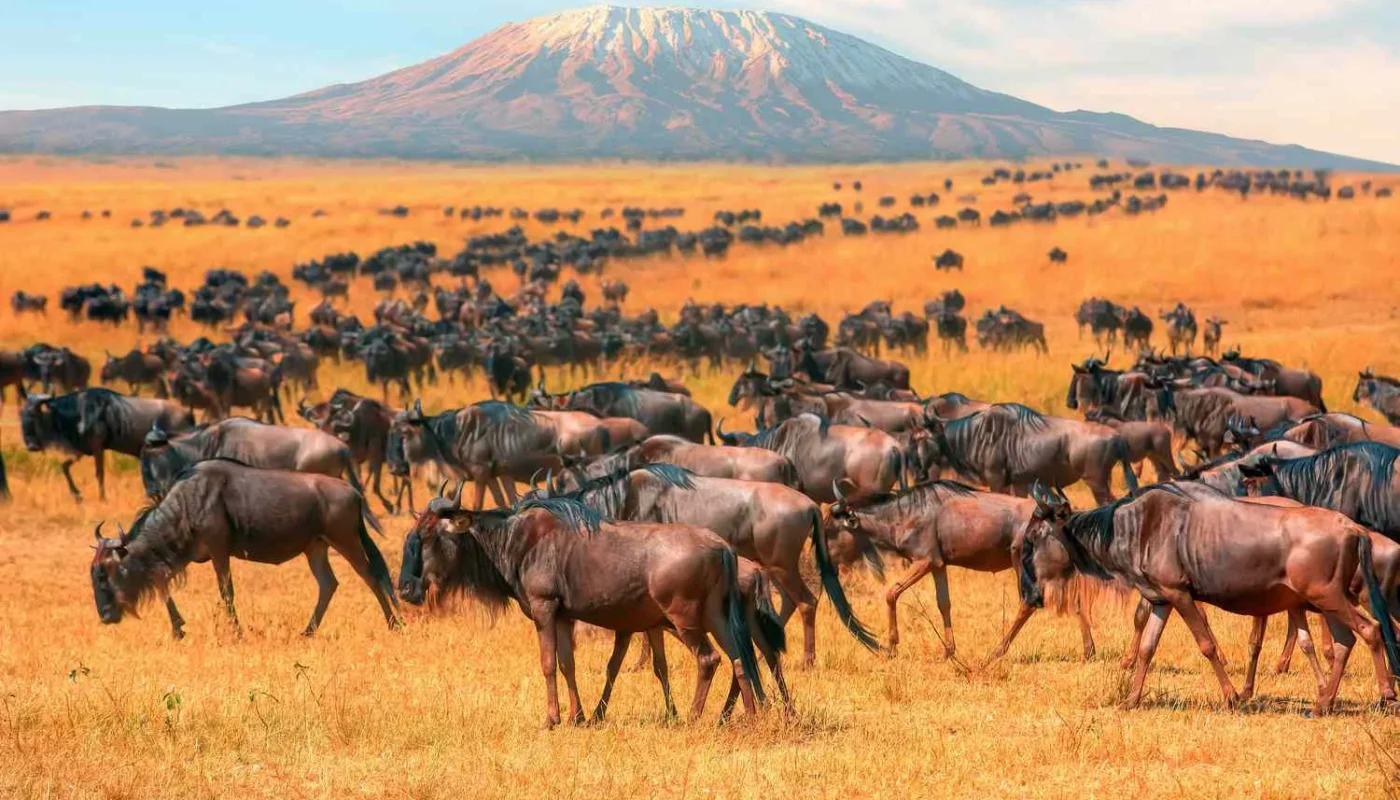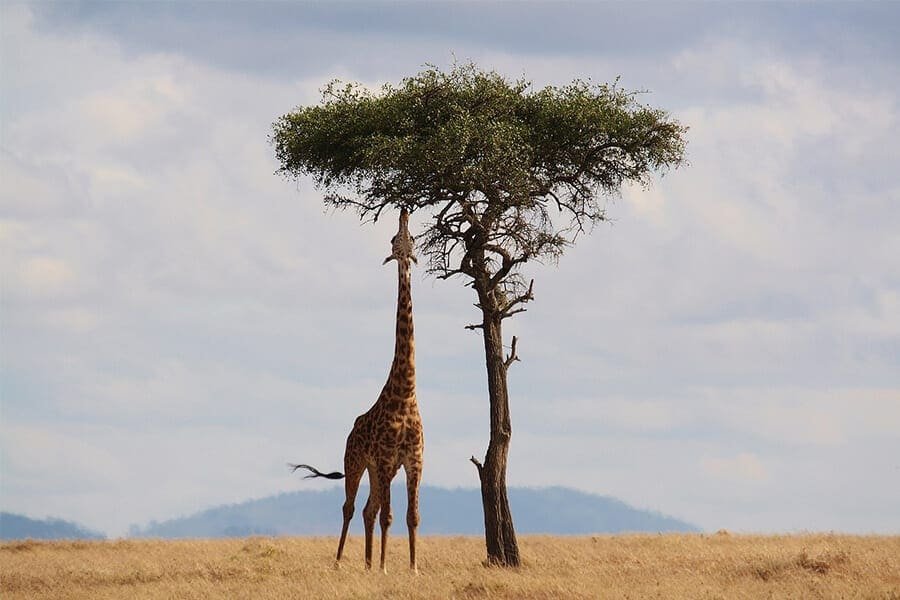Tanzania is home to some of the most iconic national parks and wildlife reserves in Africa, making it one of the top destinations for safari adventures. With vast savannahs, breathtaking landscapes, and rich biodiversity, Tanzania offers some of the best wildlife viewing experiences in the world. Whether you’re hoping to witness the Great Migration, encounter the Big Five, or explore remote wildernesses, Tanzania’s national parks have something unique for every visitor.
This guide explores the top national parks in Tanzania, highlighting the wildlife you can expect to see, the park’s unique features, and the best times to visit.
1. Serengeti National Park: Tanzania’s Safari Crown Jewel
Overview
Serengeti National Park is arguably the most famous park in Africa, covering nearly 15,000 square kilometers of vast plains. It’s globally renowned for the Great Wildebeest Migration, where millions of animals move across the plains, making it one of the most dramatic wildlife spectacles on earth.
Wildlife Highlights
- The Great Migration: Every year, over 1.5 million wildebeests, along with zebras and gazelles, migrate across the Serengeti in search of fresh grazing lands. This draws numerous predators like lions, cheetahs, and leopards, making it a prime spot for witnessing dramatic wildlife interactions.
- Big Five: Serengeti is home to the Big Five—lions, leopards, elephants, buffaloes, and rhinos—offering an unforgettable game-viewing experience.
- Predators: The open plains and kopjes (rocky outcrops) make Serengeti an excellent place to spot cheetahs and leopards.
Best Time to Visit
The dry season (June to October) is ideal for wildlife viewing, particularly the Great Migration as it passes through the Serengeti in July and August.

2. Ngorongoro Crater: The World’s Largest Volcanic Caldera
Overview
Ngorongoro Crater, a UNESCO World Heritage Site, is one of the most unique safari destinations in Tanzania. The crater’s enclosed ecosystem supports a rich array of wildlife in a relatively small area, making it a popular choice for those wanting to see a variety of species in a short period.
Wildlife Highlights
- High Density of Wildlife: The crater hosts a dense population of large mammals, including lions, leopards, elephants, buffaloes, and the rare black rhino.
- Flamingos: Lake Magadi, located at the crater’s center, attracts flocks of flamingos during the wet season.
- Black Rhinos: Ngorongoro is one of the few places in Tanzania where visitors can see endangered black rhinos.
Best Time to Visit
Ngorongoro Crater offers excellent wildlife viewing year-round. However, the dry season (June to October) is the best time to spot animals gathering near water sources.
3. Tarangire National Park: Elephants and Baobabs
Overview
Tarangire National Park is famous for its large elephant herds and the stunning landscape dotted with ancient baobab trees. It covers 2,850 square kilometers, offering a quieter and more intimate safari experience than other popular parks in northern Tanzania.
Wildlife Highlights
- Elephants: Tarangire is known for its enormous herds of elephants, often seen in large groups during the dry season.
- Birdwatching: With over 550 bird species, including the Kori bustard and yellow-collared lovebird, Tarangire is a birdwatcher’s paradise.
- Predators: Lions, leopards, and cheetahs can be spotted hunting in the open grasslands.
Best Time to Visit
The dry season (June to October) is the best time to visit Tarangire, as wildlife congregates near the Tarangire River. During this time, elephant sightings are plentiful.
4. Lake Manyara National Park: A Birdwatcher’s Dream
Overview
Lake Manyara National Park is a small but biodiverse park, famous for its birdlife and dramatic scenery, including the alkaline waters of Lake Manyara and the towering Rift Valley escarpment.
Wildlife Highlights
- Flamingos: Lake Manyara is home to thousands of pink flamingos, along with over 400 other bird species, making it ideal for birdwatchers.
- Tree-Climbing Lions: One of the park’s unique features is its tree-climbing lions, a rare behavior not commonly seen in other parts of Africa.
- Elephants: The park has a significant population of elephants, often seen roaming the forests and open grasslands.
Best Time to Visit
For birdwatching, the wet season (November to June) is ideal when migratory birds arrive. However, for general wildlife viewing, the dry season (July to October) is recommended.

5. Ruaha National Park: A Hidden Gem of the South
Overview
Ruaha National Park is Tanzania’s largest national park, covering more than 20,000 square kilometers. Despite its size, it remains one of the country’s least visited parks, offering a more remote and untouched safari experience.
Wildlife Highlights
- Elephants and Lions: Ruaha is home to large herds of elephants and prides of lions, with some of the highest concentrations of these species in East Africa.
- Predators: Ruaha is a haven for predator sightings, including lions, leopards, cheetahs, and African wild dogs.
- Birdlife: Over 570 bird species inhabit Ruaha, making it a dream destination for bird enthusiasts.
Best Time to Visit
The dry season (June to October) is ideal for wildlife viewing, as animals gather around the park’s rivers and waterholes. The wet season (November to April) offers lush scenery and great birdwatching.
6. Selous Game Reserve (Nyerere National Park): Wilderness at Its Best
Overview
Recently renamed Nyerere National Park, Selous Game Reserve is one of the largest protected areas in Africa, spanning over 50,000 square kilometers. The reserve offers an authentic wilderness experience with fewer visitors and a rich variety of wildlife.
Wildlife Highlights
- African Wild Dogs: Selous is one of the best places to see endangered African wild dogs.
- Hippos and Crocodiles: The Rufiji River is home to large populations of hippos and crocodiles, best seen on boat safaris.
- Elephants: The park is home to significant populations of elephants, buffaloes, and other large mammals.
Best Time to Visit
The dry season (June to October) is perfect for boat safaris along the Rufiji River and wildlife viewing around waterholes.
7. Mikumi National Park: The Serengeti of the South
Overview
Mikumi National Park is a hidden gem located near Morogoro and is one of the most accessible parks in southern Tanzania. Known for its open plains reminiscent of the Serengeti, Mikumi offers excellent wildlife viewing with fewer crowds.
Wildlife Highlights
- Large Mammals: Lions, elephants, giraffes, zebras, and wildebeests are common sightings in Mikumi’s Mkata Floodplain.
- Birdlife: With over 400 bird species, including the lilac-breasted roller and bateleur eagle, Mikumi is a great spot for birdwatching.
Best Time to Visit
The dry season (June to October) is the best time for wildlife viewing. Birdwatching is excellent during the wet season (November to April) when migratory birds arrive.
8. Katavi National Park: A Remote Wilderness
Overview
Katavi National Park, located in western Tanzania, is one of the most remote and least visited parks in the country. Its isolation makes it perfect for those seeking a truly wild and untamed safari experience.
Wildlife Highlights
- Hippos: Katavi’s rivers are famous for their enormous pods of hippos, often seen in large groups during the dry season.
- Buffalos and Elephants: Large herds of buffaloes and elephants roam the park’s floodplains and woodlands.
- Predators: Lions, leopards, and hyenas are frequently spotted in Katavi, offering intimate and uncrowded wildlife encounters.
Best Time to Visit
The dry season (June to October) is the best time to visit Katavi, as wildlife gathers around the few remaining water sources. The wet season (November to April) offers lush landscapes and excellent birdwatching opportunities.

Conclusion
Tanzania’s national parks are among the best in the world for wildlife viewing. From the world-famous Serengeti and the Great Migration to the remote wilderness of Ruaha and Katavi, Tanzania offers diverse safari experiences. Whether you’re a seasoned traveler or a first-time visitor, these parks provide an opportunity to witness Africa’s extraordinary wildlife in its natural habitat. Each park offers something unique, ensuring that your Tanzanian safari adventure will be unforgettable.
Make sure to plan your visit during the best season for wildlife viewing to maximize your chances of witnessing Tanzania’s incredible natural wonders.
